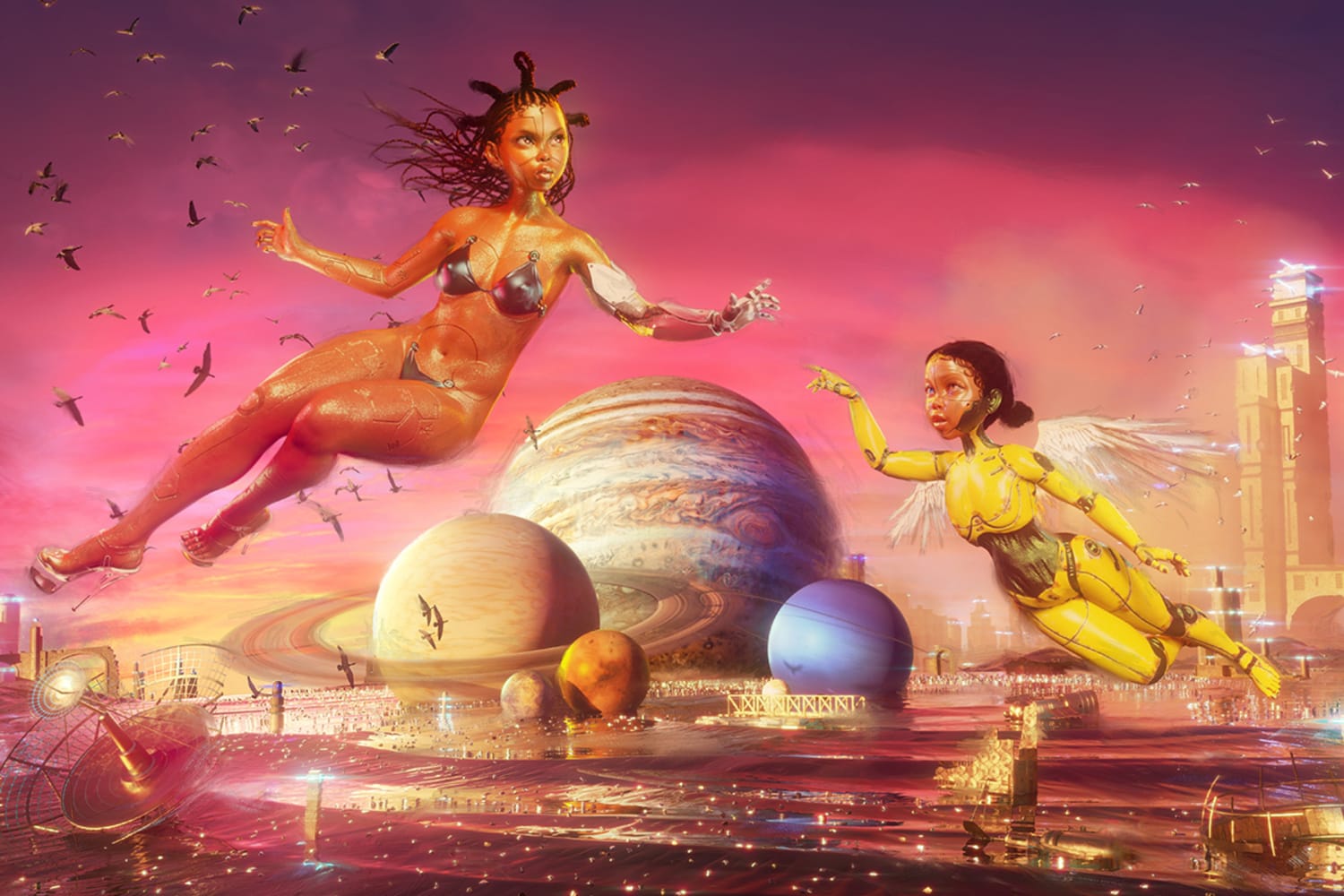NFT sales are bridging the physical and virtual space, attracting both new and traditional buyers and sellers. Wunderman Thompson Intelligence speaks with Sotheby’s Michael Bouhanna, associate specialist in London, and Max Moore, director and head of contemporary art auctions in Hong Kong and worldwide co-head of digital art sales, for their expert perspectives. Together, they unpack the future of NFTs, art ownership, and the changing financial landscape from Sotheby’s auctioning lens.
“I think we will see a mass adoption of the NFT this year.”

In October, Sotheby’s announced its debut NFT platform: Sotheby’s Metaverse. What does Sotheby’s aim to achieve on this new platform?
Michael Bouhanna: This new application of art evolved parallel to our traditional and contemporary art market. Our positioning in this new market is a bridge between the NFT audience and the traditional audience. We’re talking to both audiences at the same time, and I think it's helped because we see traditional clients getting into NFTS and some NFT collectors and crypto-native clients getting into our traditional sales and buying traditional works.
Max Moore: On the back end, it increases our efficiency and allows us to compete with some of the more decentralized platforms in terms of the automation of the transaction. We are working on future stages to make sure that we can onboard traditional clients who are bidding in our contemporary art sales, traditional art or collectibles in the physical realm to the Sotheby’s metaverse in a seamless and automated process.
According to Sotheby’s Historic Year in Review, the launch of the Sotheby’s Metaverse brought in new bidders: 78% of NFT bidders were both new and under 40. Can you speak to how virtual auctioning is engaging these new and primarily younger collectors? Has that changed your strategy in any way?
Max Moore: The NFT activity from Sotheby’s perspective was really born out of our response to the changing behavior of a traditional buyer. We're definitely seeing a younger demographic participating in our auctions throughout our business, which is fantastic, but we also noticed that traditional clients and buyers were engaging more frequently with our online sales, so it was an easy transition into the NFT marketplace, and our online sales have grown exponentially.
The ease at which people can interact with our website and can bid, purchase and navigate online has been a growing trend. This is a completely new demographic that is invested and invigorated online, and we're providing that resource for them to interact with.

Sotheby’s hosts their NFT gallery in Decentraland, paired with Twitter and Discord channels. Do you anticipate maintaining engagement on these platforms, or are you planning on expanding to others?
Max Moore: We've recognized the main platforms that have been utilized for promotion, marketing and sales for NFTs: Twitter, Discord and Decentraland, and we're open to exploring different avenues to expand and grow within the crypto market or the NFT market based on the preferences and desires of our new buyers. We’re learning and adapting to this new clientele and changing the ways in which we market based on this behavior.
How does Sotheby's NFT auction audience compare to consumers from other high-profile sectors?
Michael Bouhanna: NFTs are not only for contemporary art or digital art. They open up so many opportunities in different categories. We have departments and expertise in luxury, books, science and pop culture, so we are able to answer NFT project requests for different categories in addition to digital art or music.

What goals does Sotheby's have in Asian markets and what changes have you seen pertaining to NFTs and the new metaverse auctioning perspective?
Max Moore: We have seen exponential growth at Sotheby’s Asia. The excitement and enthusiasm for digital art in Hong Kong has been incredible. At the Refik Anadol exhibition in September, the enthusiasm, excitement, engagement, even the actual line out the door was full for three weeks straight. The screens were regenerative, constantly updating and changing. You could really sense the palpable excitement, and the exhibition really showcased how to interact and appreciate your NFT or digital artwork in the physical world, which was the purpose of that auction: what do I do with my NFT now that I've purchased it? How can I exhibit it? How can I appreciate it?

At Sotheby’s Contemporary Art Day Auction in October in London, you worked with multidisciplinary artists to help create the series: “Physical/Digital: A Modern Diptych.” What mediums have you used for this event and for other NFT auctions?
Michael Bouhanna: The point was really to bring in NFT artists to a medium that our current and traditional audience would be more inclined to understand and to buy. We asked NFT artists to create physical artwork with corresponding NFTs. The art was displayed using a physical component that our current and traditional shows were able to understand. It was the first step to get into the NFT space and it was extremely successful: the series was a total of 12 works, which was about 10% of the total number of lots. One piece, Nice to meet you, I'm Mr. MiSUNDERSTOOD by FEWOCiOUS sold for a record 2.5 million GBP and was bought by a traditional art collector.
In June, we used Samsung frame screens, which are to date the best screens to use because they give this feeling of a work of art within a frame, and then depending on the specs of the digital file we can also use some projectiles.

Describe, in your opinion, the future of buying and selling digital art and what it looks like, and what's going to change in the next five years.
Michael Bouhanna: I think we will see a mass adoption of the NFT this year. Progressively, there is a better understanding of the potential value of a digital file, how it could be minted and how it can hold artistic value. I think we'll see more traditional clients starting to collect NFT's, and I see screen technology evolving quite fast.
Max Moore: In addition to my belief that the adoption of NFTs will become quite mainstream, I believe that there’s a big market for implementing the efficiency of the blockchain within our traditional core business.
The underpinnings of the blockchain and the technology that it represents creates much more volume with the inherent efficiency of the transaction, which is driving a lot more purchasing from an investment standpoint with respect to digital art NFTs. We're seeing a lot more turnover in a shorter amount of time than with traditional art or physical asset sales. I really think that comes down to the ease at which one can transact and interact with the blockchain.
Main image of Michael Bouhanna and Max Moore, courtesy of Sotheby's.
Please provide your contact information to continue.
Related Content

NFT innovation

